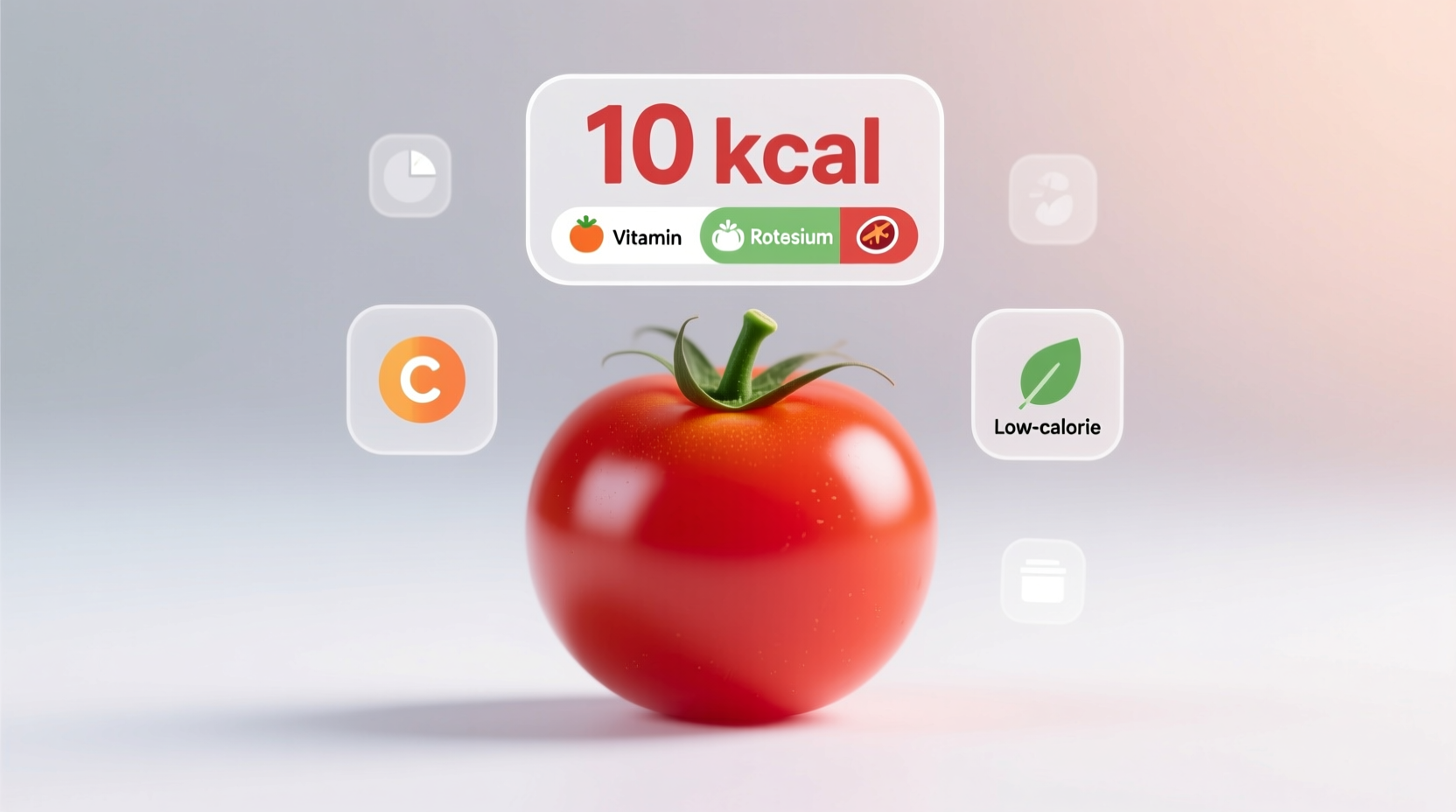When tracking your daily calorie intake, understanding the precise nutritional value of common snack foods is crucial. Cherry tomatoes represent one of the most nutrient-dense, lowest-calorie options available for health-conscious eaters. Let's explore exactly what these vibrant little fruits offer nutritionally and how you can maximize their benefits in your diet.
Cherry Tomato Calorie Breakdown by Serving Size
Understanding portion sizes helps put cherry tomato calories into practical perspective. The USDA's FoodData Central provides the most current nutritional analysis based on extensive laboratory testing of commonly consumed varieties.
| Serving Size | Number of Cherry Tomatoes | Calories | Carbohydrates |
|---|---|---|---|
| 1 cherry tomato | 1 | 1 | 0.2g |
| Standard serving | 10 | 10 | 2.4g |
| Medium handful | 25 | 25 | 6g |
| Large serving | 50 | 50 | 12g |
This nutritional data comes directly from the USDA FoodData Central database, the most authoritative source for standardized food composition information in the United States. Their measurements account for typical cherry tomato varieties found in grocery stores nationwide.
Why Cherry Tomatoes Outperform Regular Tomatoes Nutritionally
While both types offer excellent nutritional profiles, cherry tomatoes provide some distinct advantages that make them particularly valuable for health-focused eating:
- Higher concentration of lycopene - The smaller size and thinner skin allow for better absorption of this powerful antioxidant
- Greater vitamin C density - Per gram, cherry tomatoes contain approximately 15% more vitamin C than standard slicing tomatoes
- Naturally sweeter profile - Higher sugar content (while still extremely low calorie) makes them more satisfying as a snack
- Convenient single-bite portions - Eliminates preparation time and reduces food waste
According to research published by the National Institutes of Health, the lycopene in cherry tomatoes demonstrates superior bioavailability compared to larger tomato varieties, meaning your body can utilize more of this beneficial compound.
Practical Applications for Your Diet
Understanding the calorie count is just the beginning. Here's how to maximize cherry tomatoes in various dietary approaches:
For Weight Management
A cup of cherry tomatoes (about 150g or 30 tomatoes) contains only 27 calories but provides 2 grams of fiber and significant volume. This makes them an excellent choice for:
- Adding bulk to salads without substantial calorie increase
- Creating satisfying snacks when paired with protein sources
- Replacing higher-calorie snack options while maintaining flavor variety
Dietary Context and Considerations
Cherry tomatoes fit seamlessly into virtually all popular dietary patterns:
- Keto diets: With just 2.4g net carbs per 10 tomatoes, they fit within most keto carb limits
- Mediterranean diets: A staple ingredient that contributes to the diet's celebrated health benefits
- Diabetic meal planning: Low glycemic load makes them suitable for blood sugar management
Registered dietitians from the Academy of Nutrition and Dietetics consistently recommend cherry tomatoes as a smart choice for those managing calorie intake while ensuring adequate micronutrient consumption.
Maximizing Nutritional Benefits
To get the most from your cherry tomatoes:
- Store properly: Keep at room temperature away from direct sunlight to preserve nutrient content
- Eat with healthy fats: Pair with olive oil, avocado, or nuts to enhance absorption of fat-soluble vitamins
- Avoid overcooking: Light roasting preserves nutrients better than prolonged high-heat cooking
- Choose organic when possible: Studies suggest organic tomatoes may contain higher levels of certain antioxidants

Common Questions About Cherry Tomato Nutrition
Understanding the precise nutritional profile helps make informed dietary choices. Here are answers to frequently asked questions about cherry tomato calories and nutrition.











 浙公网安备
33010002000092号
浙公网安备
33010002000092号 浙B2-20120091-4
浙B2-20120091-4